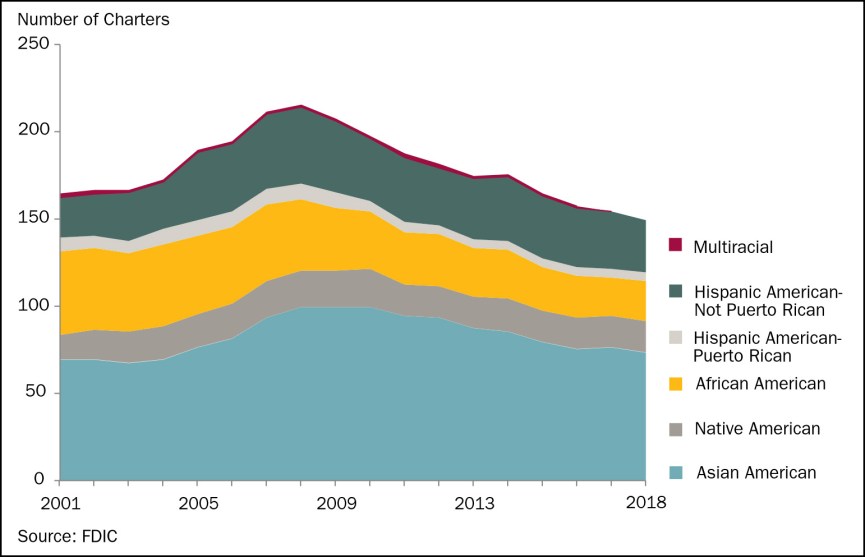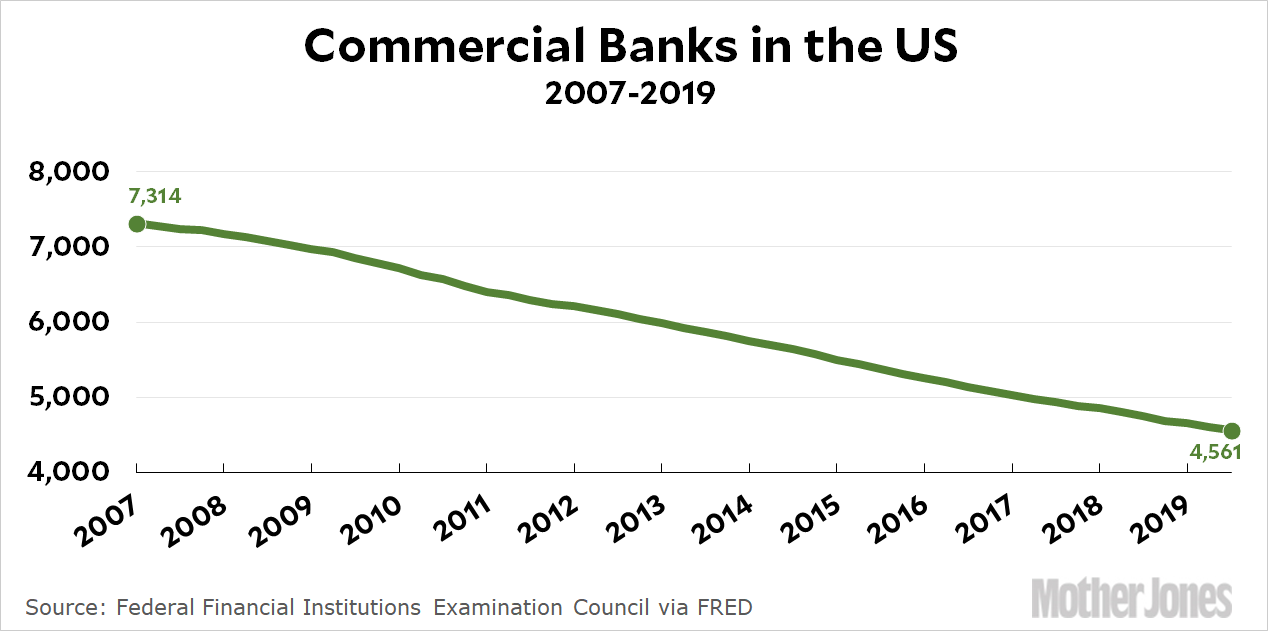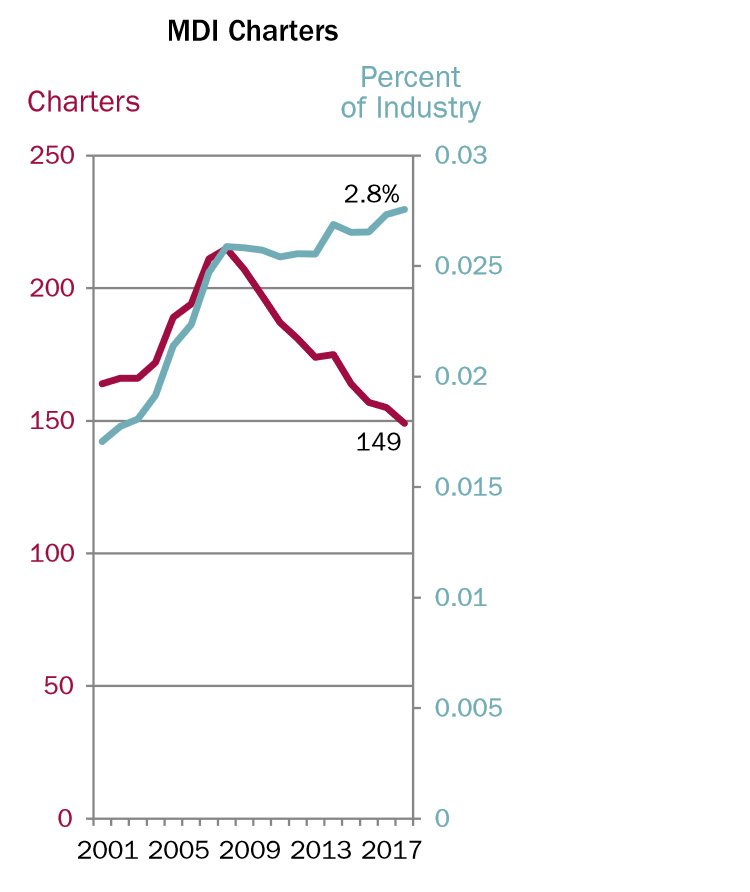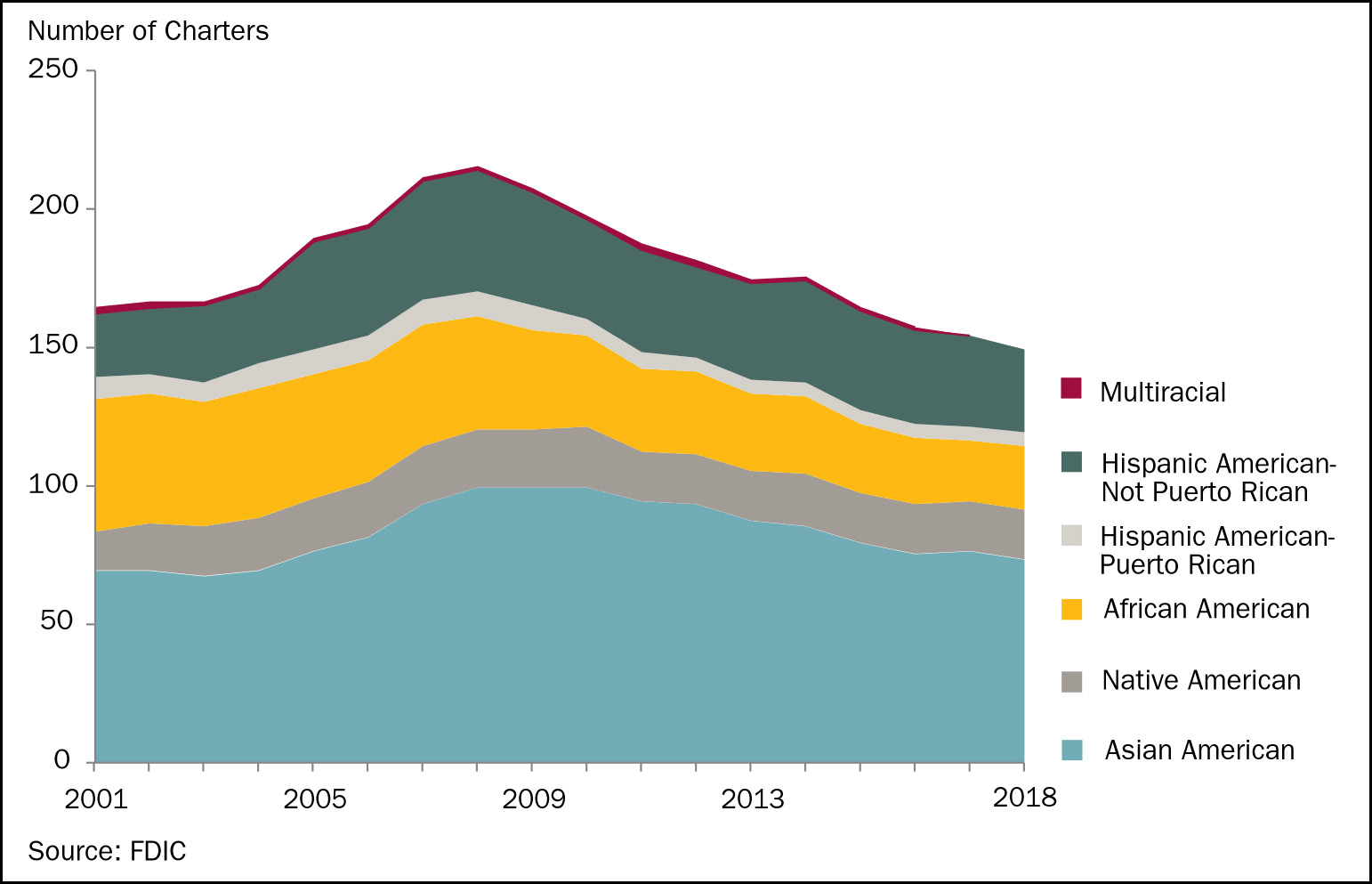
Axios reports that minority-owned banks have been disappearing since the financial crisis:
Bank failures, mergers and closures have fueled a drop-off in the number of minority-owned banks. The institutions seek to provide financial services to communities left behind and underserved by the mainstream banking sector.
I know we have bigger things to worry about, but reporting like this continues to annoy me. Technically, it’s true that there are fewer minority-owned banks than there used to be, but there are fewer banks of all kinds than we had before the financial crisis:

So perhaps minority-owned banks aren’t in any special trouble. They’re just consolidating and failing like every other kind of bank. And sure enough, if you turn to the very first page of “Structural Change Among MDIs” in the report that Axios itself references, that’s exactly what it says:

As you can see, the number of minority charters has fallen since the financial crisis, but minority-owned banks actually make up a bigger share of the banking industry than they used to. In fact, the report says that although the number of minority-owned banks has declined since the peak of the financial bubble—hardly a surprise—in most cases the number has gone up since 2001:
The number of MDIs with Native American minority status increased from 14 to 18 institutions since 2001. The number of Hispanic American MDIs grew from 31 institutions in 2001 to 35 in 2018, representing almost one-fourth of MDI charters. In addition, the number of Asian American MDIs increased from 69 to 73.
There is only one exception to this: black-owned banks have cratered, going from 48 in 2001 to 21 this year:

So: minority-owned banks aren’t really disappearing, they’ve just returned to their pre-bubble levels. In this, they’re doing better than most banks, which have declined substantially via consolidation and failure since 2001.
However, there does appear to be a big problem with black-owned banks. That would be worth investigating further.















